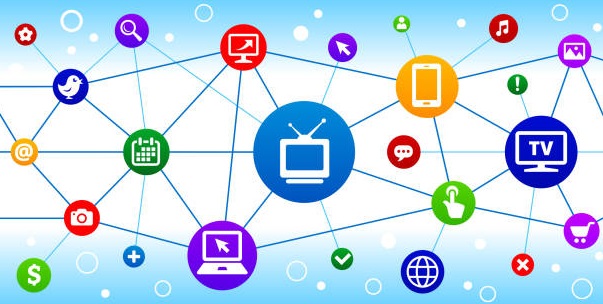In today’s competitive digital landscape, businesses need a robust strategy to create demand and grow their customer base. Demand generation encompasses various marketing channels and tactics that drive awareness, interest, and conversion. The key to success is identifying and leveraging the most effective demand generation channels that align with your business goals and audience needs. This article will explore the top demand generation channels, providing insights into how each can contribute to business growth, particularly in the U.S. market.
What Is Demand Generation?
Before diving into specific channels, it’s essential to define demand generation. Demand generation is a complete marketing plan used to raise awareness of a good or service so generating interest and hence a predictable sales stream. It spans multiple marketing stages, including lead generation, nurturing, and customer acquisition. Unlike lead generation, which focuses on generating contacts, demand generation is about driving meaningful engagement and fostering long-term customer relationships.
The Importance of Multi-Channel Demand Generation
Businesses that invest in multi-channel demand generation tend to outperform those that rely on a single tactic. Engaging potential customers across multiple platforms ensures that your brand remains visible at different touchpoints in its buyer journey. This way of doing things lets marketers make messages that are specific to each part of the funnel, from becoming aware of the product to buying it. Now, let’s explore the most effective demand-generation channels.
1. Content Marketing
Why Content Marketing?
Content marketing remains a foundational element of demand-generation strategies. High-quality, relevant content educates potential customers, builds trust, and positions your business as an authority in your industry. Content marketing is versatile and can be used in various forms, including blog posts, whitepapers, videos, podcasts, and infographics.
Key Content Strategies for Demand Generation
- SEO-Driven Blog Posts: Optimizing blog content for search engines helps attract organic traffic, especially when targeting key terms relevant to your industry. Over time, SEO-optimized content can drive consistent traffic and generate qualified leads.
- Thought Leadership Articles: By sharing expert insights, businesses can showcase their knowledge, which fosters trust and credibility. This content works well for demand generation as it targets individuals at the awareness stage.
- Case Studies and Testimonials: Highlighting success stories and satisfied customers gives potential buyers proof of your product’s effectiveness, which aids in driving demand.
Performance Marketing in Content Distribution
Once content is created, promoting it through performance marketing, including tactics like pay-per-click (PPC) advertising and display ads, can further amplify reach. By focusing on measurable outcomes such as conversions and clicks, businesses can maximize the return on their content marketing investment.
2. Email Marketing
One of the most reasonably priced demand-generating tools available is still email marketing. It allows businesses to maintain communication with prospects while nurturing them toward conversion.
Tactics for Successful Email Marketing
- Segmented Email Campaigns: Divide your email list based on buyer personas or customer journey stages to deliver more personalized and relevant content.
- Drip Campaigns: Automated email sequences can nurture leads over time, offering valuable information at strategic points in their journey to guide them toward a purchase decision.
- Lead Magnets and Opt-ins: Providing free resources such as eBooks or exclusive reports in exchange for email addresses helps grow your list and initiates a relationship with potential customers.
Programmatic Advertising for Better Personalization
Using programmatic advertising, marketers can automate the delivery of personalized email campaigns, ensuring that the right messages reach the right people at optimal times. This approach allows for more efficient targeting and helps drive better results in email marketing.
3. Paid Media Advertising
Search Engine Advertising (SEA)
Paid media channels like Google Ads allow businesses to capture demand directly from search engine users. With keyword-based targeting, advertisers can reach individuals who are actively searching for solutions similar to their product or service.
Display and Social Media Advertising
Running display ads and social media advertising campaigns on platforms such as Facebook, Instagram, and LinkedIn also plays a vital role in generating demand. These platforms offer advanced targeting options, such as interests, behaviors, and demographics, ensuring that ads are shown to relevant audiences.
Connected TV Advertising
One rising trend in paid media advertising is connected TV (CTV) advertising. This format allows businesses to reach viewers on streaming services like Hulu, Roku, or other over-the-top (OTT) platforms. Unlike traditional TV ads, CTV ads can be targeted to specific households based on data such as viewing habits and location.
By utilizing CTV advertising, businesses can integrate TV exposure with digital precision, ensuring that their message reaches the most relevant audience. This results in better engagement rates and contributes to an overall demand generation strategy.
4. Social Media Marketing
Social media marketing is essential for any demand-generation campaign, offering platforms to promote content, build communities, and foster engagement.
Organic vs. Paid Social Media
- Organic Social Media: Organic posts on platforms like Facebook, LinkedIn, and Twitter help build a long-term relationship with your audience by providing educational or entertaining content.
- Paid Social Ads: Paid social media ads can amplify reach and target specific user demographics or behaviors. Facebook Ads, LinkedIn Ads, and Instagram promotions allow precise targeting and retargeting strategies.
Leveraging User-Generated Content (UGC)
Social proof is a powerful tool in demand generation. Credibility increases when consumers post their experiences with your good or service on social media. User-generated content (UGC) in the form of reviews, testimonials, or customer stories can help create awareness and foster trust with potential buyers.
5. Account-Based Marketing (ABM)
A focused technique called account-based marketing (ABM) emphasizes high-value accounts above general audience categories. This demand generation strategy is highly effective for B2B companies with longer sales cycles or higher transaction values.
How ABM Works
- Personalized Campaigns: ABM allows marketers to create highly tailored campaigns for each account. These campaigns often involve direct mail, email, social media ads, and personalized landing pages.
- Cross-Channel Integration: Successful ABM campaigns often span multiple channels, including email marketing, social media, and even OTT advertising to reach decision-makers at different points in their buyer journey.
ABM’s strength lies in its focus on quality rather than quantity, ensuring that marketing resources are directed toward accounts that are most likely to convert.
6. Influencer Marketing
Influencer marketing leverages the reach and authority of individuals with large social media followings to promote products or services. This channel works particularly well for demand generation as influencers can introduce your brand to a wider audience authentically and engagingly.
Key Influencer Marketing Strategies
- Micro-influencers: Collaborating with smaller, niche influencers tend to generate higher engagement rates, especially in B2B or highly specialized markets.
- Sponsored Content: Sponsored posts or influencer product reviews help create demand by showcasing your product in real-world scenarios.
Performance Tracking
It’s critical to measure the performance of influencer campaigns through engagement metrics, conversions, or even website traffic driven by influencer activity. Programmatic tools can assist in tracking and managing these campaigns for better optimization.
7. Referral Marketing
Word-of-mouth recommendations are still one of the most powerful forms of demand generation. Referral marketing encourages clients to recommend people to your company, therefore fostering natural expansion from current clients.
Building a Referral Program
- Incentives: Offer discounts, free services, or exclusive content in exchange for successful referrals.
- Easy Sharing Mechanisms: Make sure clients can quickly send referral links by SMS, social media, or email.
Referral marketing, when combined with digital channels like social media or email, can significantly amplify your demand generation efforts.
8. Webinars and Virtual Events
Webinars and virtual events provide an opportunity to educate potential customers while showcasing your expertise. These events are particularly effective for B2B demand generation, as they allow direct interaction between your brand and prospects.
Best Practices for Webinars
- Offer Valuable Content: Webinars should provide in-depth insights or training on a relevant industry topic to attract serious prospects.
- Follow-Up Strategy: After the event, nurture attendees with follow-up emails or exclusive content offers to keep them engaged and move them further down the sales funnel.
Conclusion
Successful demand generation relies on a multi-channel strategy that incorporates a mix of content marketing, paid media, social media, and more specialized tactics like ABM and webinars. By leveraging the right demand generation channels for your business, you can create awareness, drive engagement, and nurture leads toward conversion. The key to growth is finding the right balance between these channels and continually optimizing them based on performance.
If you want morе еxciting contеnt visit. Globallyviz.com














Comments